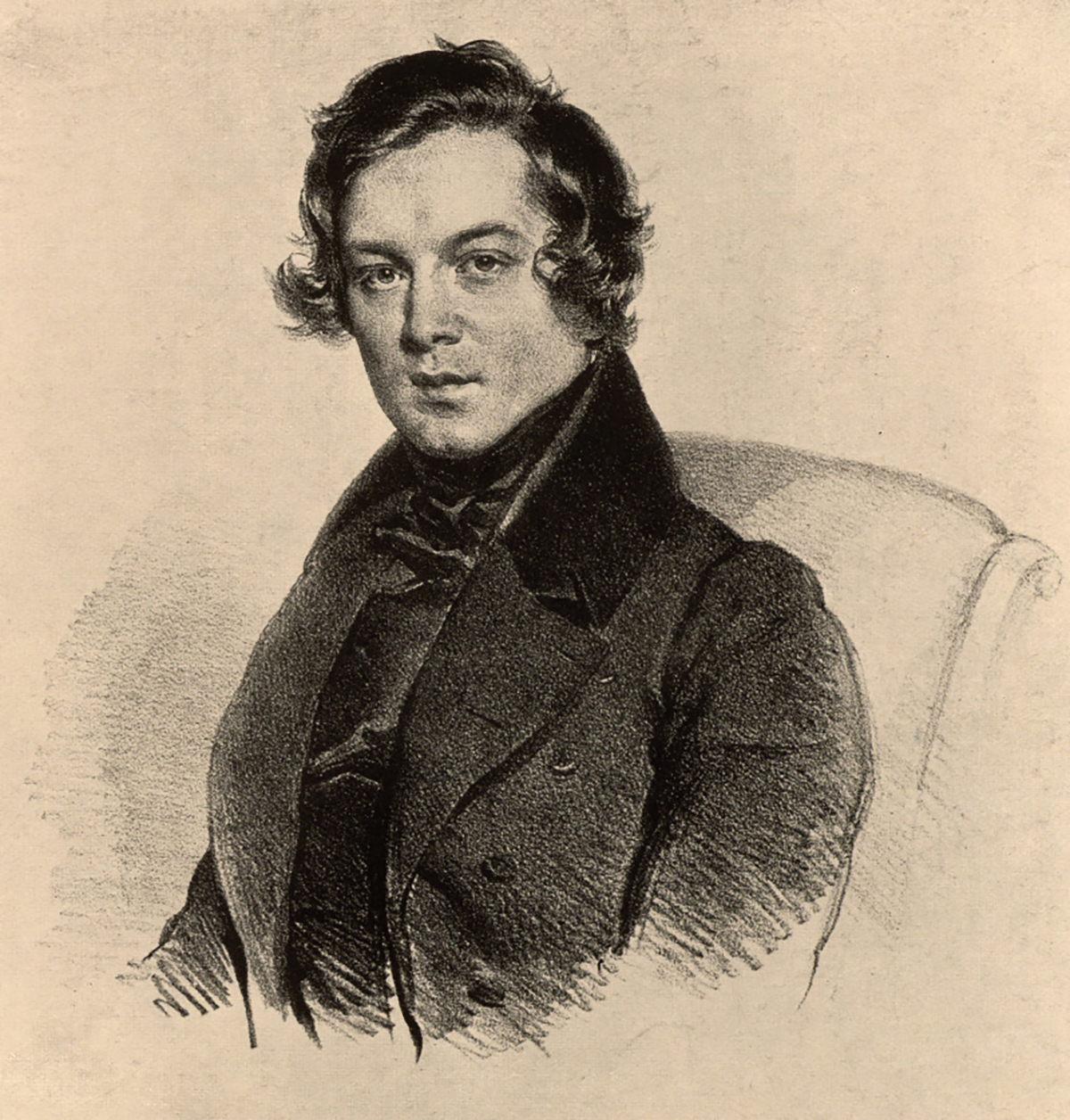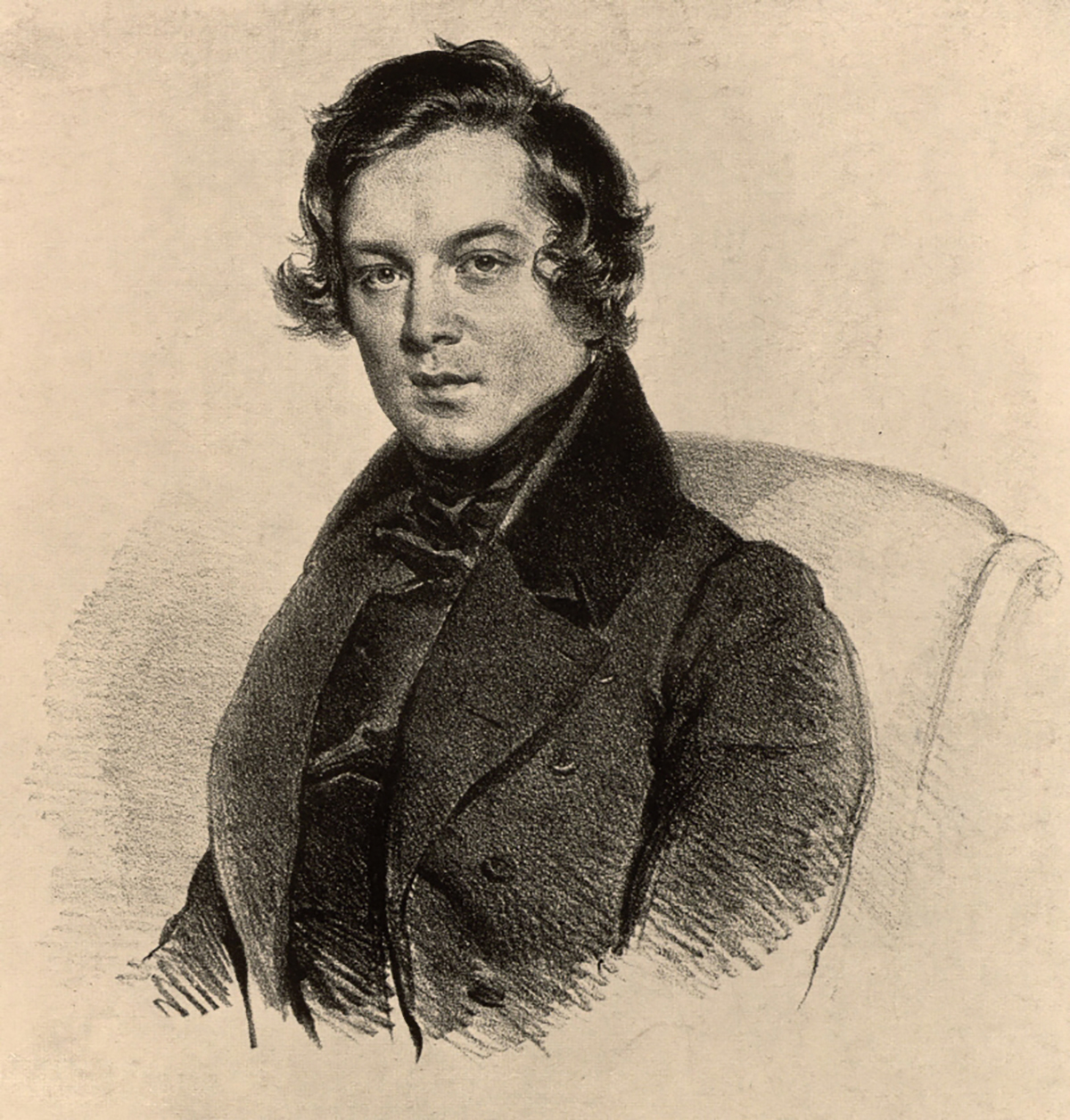"고독하지만 자유롭다!"
인생은 만남의 연속이다. 수많은 사람들과 인연을 만들며 삶을 채워가지만 어느 순간 나만의 깊은 외로움에 휩싸이는 순간이 있다. 우리는 코로나 팬데믹을 지나오며 타의적인 고독과 외로움을 경험했지만 내면의 고독은 인간의 본성이다, 그리고 그것은 삶을 아프게도 하지만 새로운 에너지의 원천이 되기도 한다. 여기, 고독하지만 자유로운 삶을 살아간 한 남자가 있다. "나 자신보다도 그리고 이 지상에 있는 그 어떤 것보다도 당신을 더 사랑합니다" 끝내 이룰 수 없었던 클라라에 대한 브람스의 사랑고백. 그의 삶과 예술의 원천은 그녀에 대한 고독한 사랑이었다. 슈만과 클라라, 그리고 브람스의 삶은 그들의 음악만큼이나 격정적이고 아름다웠으며 또 외로웠던 이야기이다.
어릴 적부터 음악적 재능이 뛰어났던 슈만 (Robert Alexander Schumann, 1810~1856)은 모친의 바람대로 라이프치히 법대에 진학한다. 하지만 그는 음악가의 길을 결심하고 유명 피아노 교수였던 프리드리히 비크의 문하에 들어가 스승의 집에 머물며 피아노 레슨을 받기 시작한다. 하지만 그는 스승의 딸인 클라라 (Clara Josephine Wieck Schumann 1819~1896)와 운명적인 사랑에 빠지고, 과도한 피아노 연습은 그의 손을 망가뜨리고 만다. 결국 슈만은 피아니스트의 꿈을 접고 작곡가의 길로 들어서고 클라라와의 사랑은 비크의 심한 반대에 부딪치게 된다. 스승과 제자의 대립은 극한으로 치달아 법정 소송으로 이어지지만 슈만은 재판에서 승소하여 클라라와 결혼하게 된다. 음악사적으로 가장 이상적인 커플로 여겨지는 슈만과 클라라, 하지만 슈만에게 찾아온 정신질환과 정신병원 입원, 그리고 자살시도는 클라라에게 큰 슬픔을 안겨준다. 그리고 항상 그녀의 곁에는 슬픔을 달래 준 한 남자가 있었다.

1853년 가을의 어느 날 슈만과 클라라 부부에게 아름다운 금발머리의 청년이 나타난다. 큼지막한 배낭과 진흙이 묻은 장화를 신은 20살의 이 청년은 자신을 브람스 (Johannes Brahms, 1833~1897)라고 소개한다. 당시 유명한 음악가였던 요하임의 추천으로 슈만을 찾은 무명의 젊은 음악가 브람스는 자신의 작품을 슈만 부부에게 선보이기 위해 찾아온 것이다. 브람스의 피아노 연주와 작품을 들어본 슈만 부부는 브람스의 음악성에 깊은 감명을 받게 된다. 그리고 브람스의 천재성을 단번에 알아본 슈만은 자신이 편집장으로 있는 “음악 신보”에 <새로운 길>이라는 글을 써서 브람스를 세상에 알리는데 큰 도움을 준다. 브람스가 슈만의 집에 머무르는 동안 쓰여진 슈만과 클라라의 일기에는 매일 브람스의 작품에 관한 찬사로 채워졌고 이들 부부에 대한 브람스의 존경과 친밀감은 더욱 깊어져 갔다.
하지만 슈만이 정신질환으로 라인강에 투신하는 사건이 발생하고 정신병원에 입원하자 브람스는 곧바로 클라라에게 달려가 깊은 상처를 받은 그녀를 절망에서 구하기 위해 혼신의 힘을 다한다. 그러는 동안 브람스는 클라라를 처음 본 순간 느꼈던 자신의 감정이 사랑이었음을 깨닫게 되고 혼란에 빠지게 된다. 14살 연상의 클라라에 대한 브람스의 사랑은 걷잡을 수 없이 타오르고 있었고 그의 영혼은 사랑하는 여인 클라라와 스승이자 은인의 부인 클라라 사이에서 갈등하게 된다. 그런 브람스에게 클라라는 자신이 슈만의 아내임을 상기시키며 우정 관계만을 유지하려고 했으나 그녀 역시 브람스의 사랑이 없었다면 자신에게 벌어진 끔찍한 슬픔을 견딜 수 없었을 것이다.

1856년 슈만이 세상을 떠나자 브람스의 고뇌는 해방되었고 클라라는 남겨진 7명의 아이들의 양육과 남편 슈만의 작품을 세상에 알리는 일에 몰두한다. 그리고 이런 일들을 통해 살아가는 의미, 남겨진 삶의 의미를 찾아가는 성숙한 미망인, 클라라 슈만으로 변모해간다. 클라라에 대한 브람스의 사랑은 슈만이 죽은 후 더욱 깊이 있는 내면적 사랑으로 변해갔고 오히려 그의 정열은 차분히 가라앉아 예술적 영감으로 승화되어 갔다. 클라라를 처음 본 20살 때부터 세상을 뜬 64세까지 브람스의 마음속에는 항상 클라라가 있었고 그 모든 열정은 음악으로 표현되었다.
클라라가 1895년 뇌졸중으로 쓰러졌다는 소식을 접하자 브람스는 운명적인 죽음의 예감을 느낀다 그리고 1896년 77세의 나이로 클라라가 사망하자 평생을 독신으로 살아온 브람스도 일년 뒤 64세를 일기로 그녀의 뒤를 따라가게 된다. 클라라에 대한 브람스의 사랑은 어느 한순간도 본능을 앞세우지 않은 이성적이고 순결한 것이었으며 그의 작품을 통해 탄생한 고귀한 것이었다. "나의 삶의 가장 아름다운 체험이요 가장 위대한 자산이며 가장 고귀한 의미를 상실했다."라고 클라라의 죽음에 한탄한 브람스. 사랑의 의미가 너무 가벼워진 지금, 프랑스의 작가 프랑스와즈 사강의 물음이 생각난다. “브람스를 좋아하세요?”
P.S. 이 글을 읽고 브람스의 교향곡 제3번의 3악장을 들어 보길 권한다. 브람스의 고독한 삶과 클라라에 대한 아름답지만 아픈 사랑을 느낄 수 있는 브람스 음악의 정수이다.
<사진 출처 - 위키피디아/ 슈만/ 브람스 교향곡 제3번의 3악장>
Do you like Brahms?
“Lonely but free”
Life is a continuity of meetings. We meet and build numerous relationships with people and sometimes face a moment of deep loneliness. Although we encountered unwanted solitude and loneliness during the coronavirus pandemic, solitude within ourselves is basic human nature, and although it makes life painful, it sometimes creates a source of new energy. Here is a man who lived a lonely but free life. “More than myself, and more than anything else in this world, I love you.” This is the confession of Brahms’s unrequited love for Clara. The source of his life and music was his lonely love for Clara. The lives of Clara Schumann and Brahms were equally passionate, beautiful, and lonely, as their music.
Robert Alexander Schumann (1810–1856), who displayed superb musical talent when young, studied Law at the University of Leipzig because of family pressure; however, he decided to become a musician and became a student of Friedrich Wieck, a well-known piano professor, and began to take piano lesson at his teacher’s house. He fell in love with his teacher’s daughter, Clara Josephine Wieck Schumann (1819–1896). He injured his fingers after excessive piano practice, and he abandoned the idea of becoming a pianist, devoting himself instead to composition. His love for Clara encountered severe opposition from her father. The confrontation between teacher and student culminated in a lawsuit. Schumann won the legal battle against Clara’s father and married her. Schumann and Clara have been regarded as the most ideal couple in the history of music, but Schumann’s mental disorder, admission to a mental asylum, and suicide attempt caused Clara intense grief. One man stood beside her to soothe her sorrow.

On an autumn day in 1853, a handsome blond young man came to visit the Schumanns. Wearing a large backpack and muddy shoes, the 20-year-old introduced himself as Johannes Brahms (1833–1897). The unknown young musician came to the Schumanns to present them with his work, along with a letter of introduction from Joachim, the then-famous musician. Schumann and Clara were deeply impressed by his piano playing as well as his work. Schumann immediately recognized Brahms’s genius and published an article titled “Neue Bahnen” (“New Paths”) in the journal Neue Zeitschrift für Musik, greatly helping Brahms’s recognition. Diaries by Schumann and Clara that were written while Brahms was staying at their house were full of praise for his work, and Brahms’s respect and closeness for the couple deepened.
However, when Schumann attempted suicide by throwing himself from a bridge into the Rhine River due to his mental illness and was admitted to a mental asylum, Brahms immediately approached Clara to save her from despair. Brahms realized then that the feeling he had for Clara when he first saw her was love, and he became confused. His love for Clara, who was 14 years his senior, was intense and out of control; he pined for Clara as his lover and regarded her simultaneously as the wife of his teacher and benefactor. Clara tried to maintain a friendly relationship with him by reminding him that she was Schumann’s wife, but she could not have endured her unexpected brutal grief without Brahms’s love.

In 1856, when Schuman died, Brahms was no longer in anguish, and Clara devoted herself to rearing her seven children and making Schumann’s works known to the world. In doing so, she found meaning in her remaining life as a mature widow. After Schumann’s death, Brahms’s love for Clara became a deep, inner love, and his passion calmed and transcended to artistic inspiration. From when he first met Clara at the age of 20 and until he died at the age of 64, Brahms always had Clara in his mind, expressing his passion for her in his music.
When he heard that Clara Schumann had suffered a stroke in 1895, Brahms experienced a premonition of her death. Clara died in 1896, at the age of 77, and Brahms, who had lived unmarried his whole life, died one year later, at the age of 64. His love of Clara was platonic and pure without instinct at any moment and was embodied in his works. Upon Clara’s death, Brahms lamented by saying, “I lost the most beautiful experience in my life, the greatest asset, and noblest meaning.” Now, as the meaning of love has dimmed, I am reminded of the question asked by French writer Françoise Sagan. “Do you like Brahms?”
P.S. I advise you to listen to Brahms’ Symphony No. 3 in F major. Op. 90 III. Poco Allegretto. It is the essence of Brahms’s music, and in it you can feel the loneliness in Brahms’s life and his beautiful but painful love for Clara.













